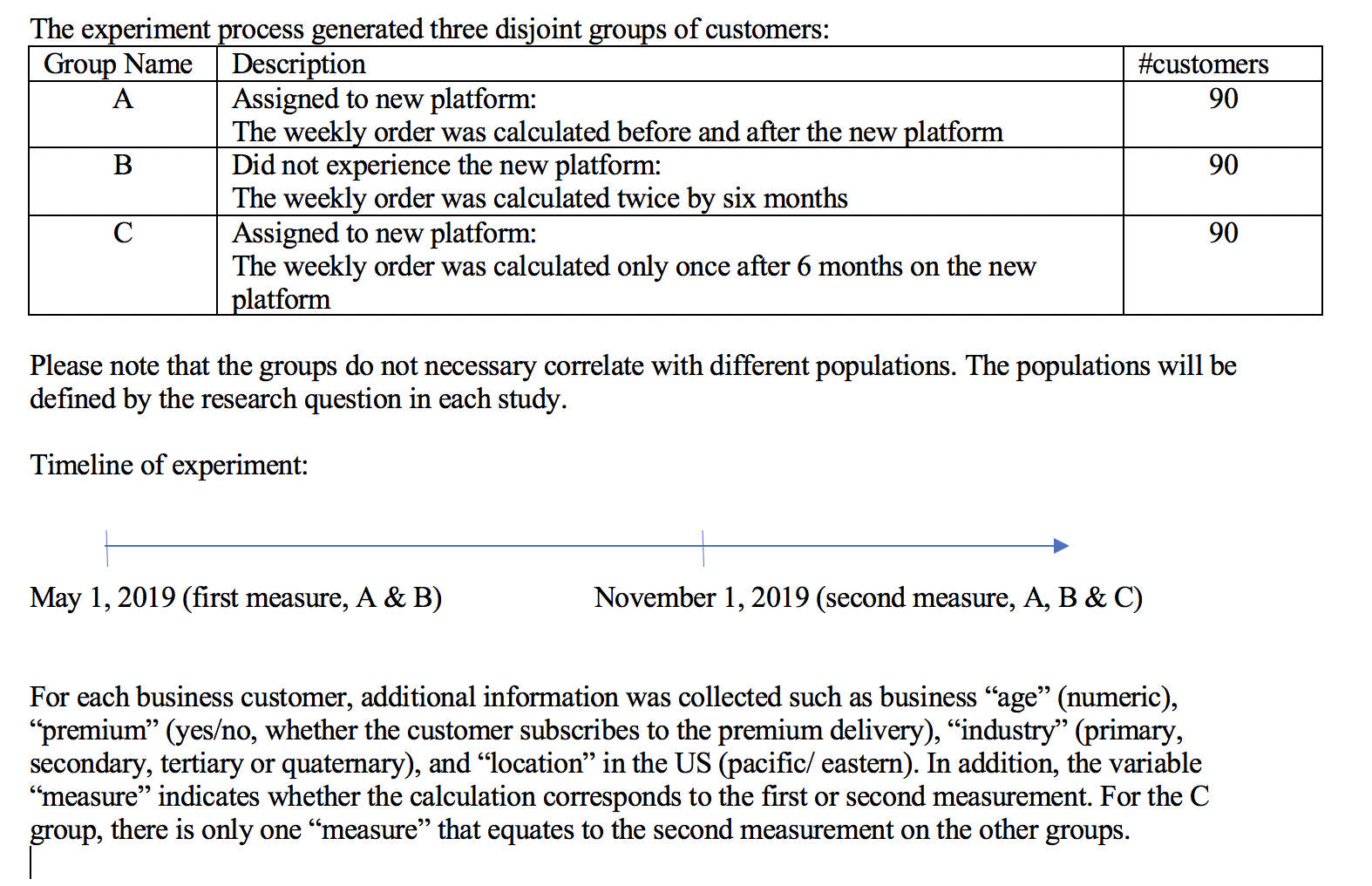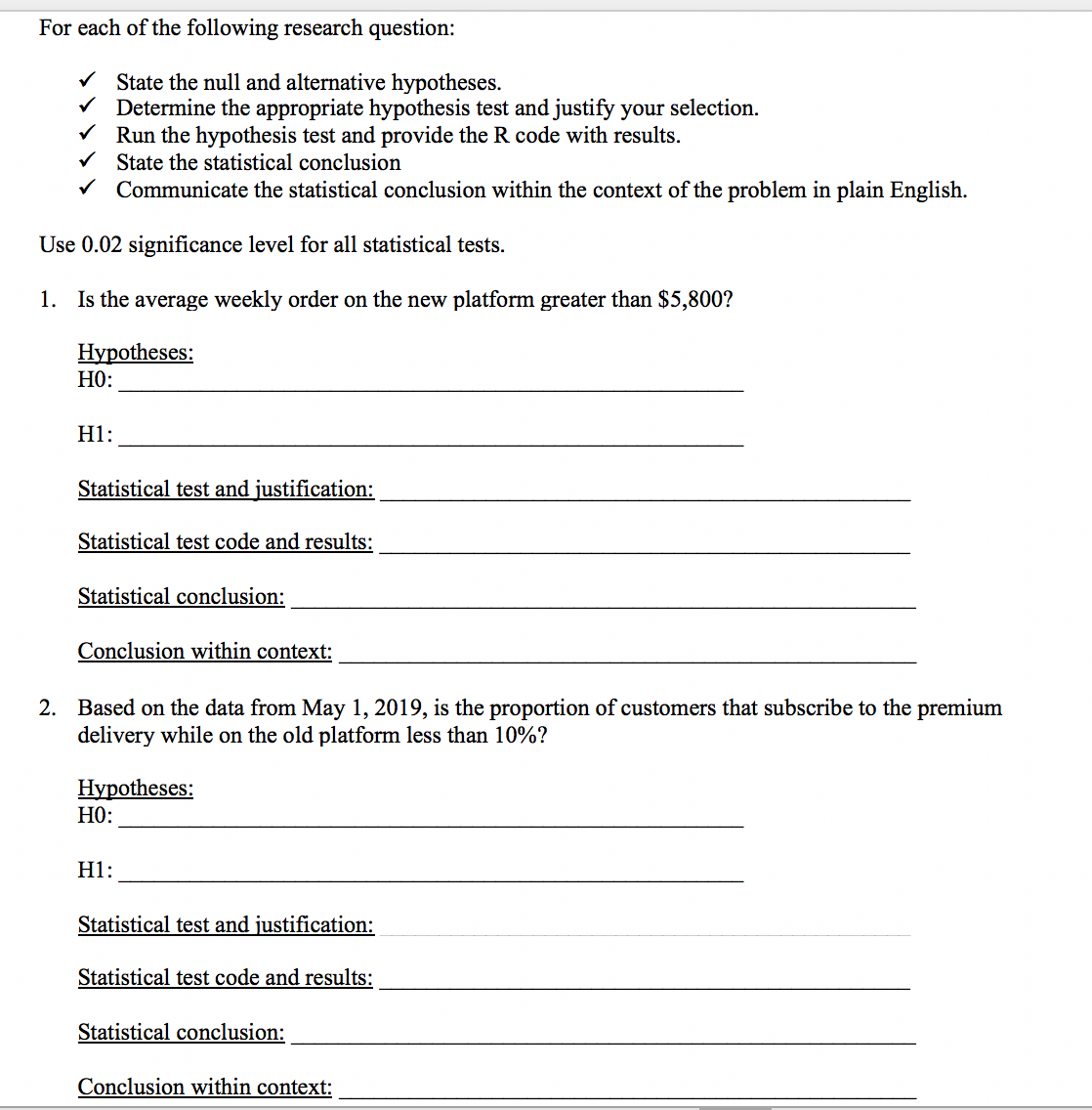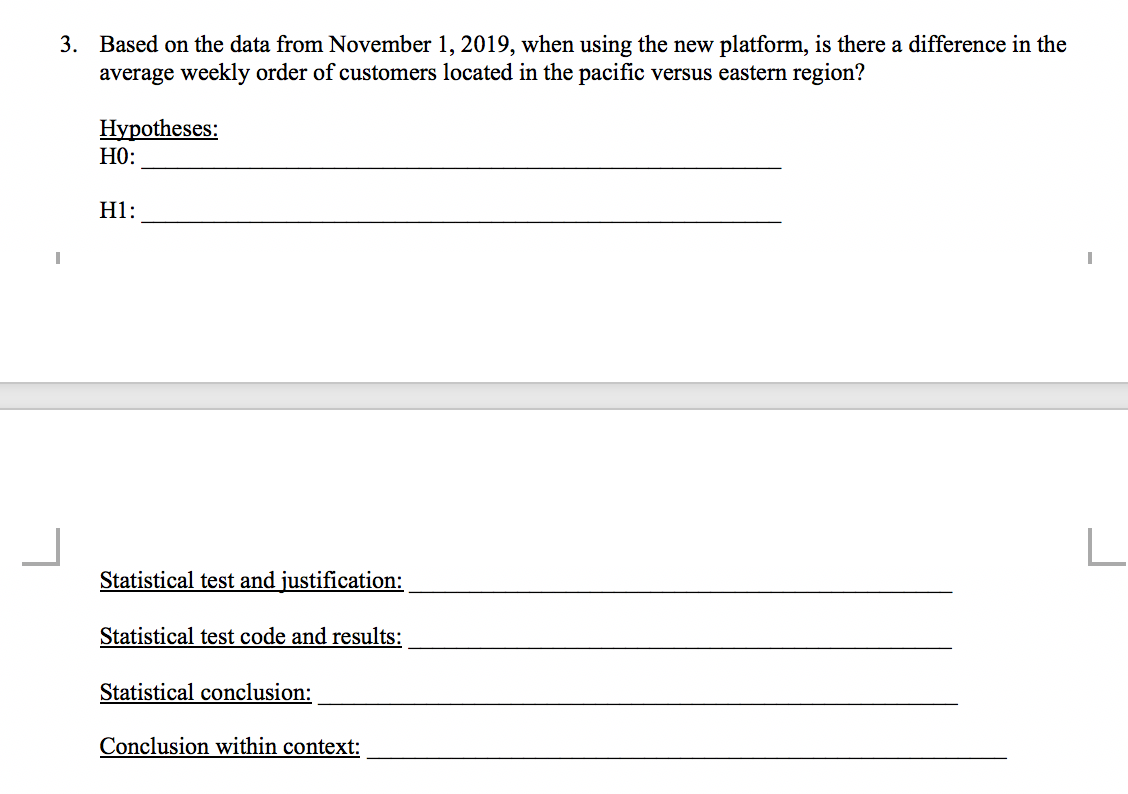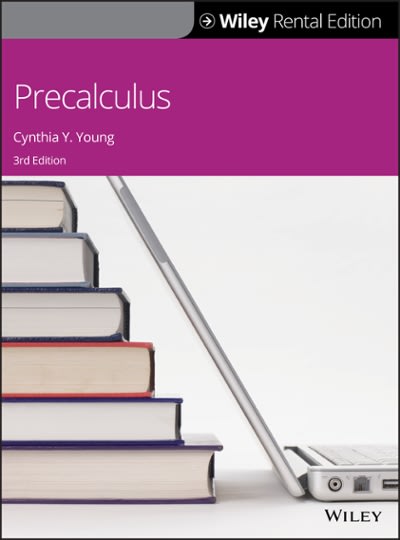A retail company is testing a new platform to promote and sell products to business customers.
As part of the experiment to examine the effect of the new platform on sales, the following data was collected:
-180 established business customers (or accounts) were randomly selected, and their average weekly order for the last 6 months was calculated.
-90 randomly selected customers out of the 180 were routed to use the new platform. After six months, their average weekly order was calculated once again.
-Additional 90 new customers were routed to the new platform, and their average weekly orders were calculated after six months.
Use R command or Rstudio to run the hypothesis test and provide R code.
The experiment process generated three disjoint groups of customers: Group Name Description #customers A Assigned to new platform: 90 The weekly order was calculated before and after the new platform B Did not experience the new platform: 90 The weekly order was calculated twice by six months C Assigned to new platform: 90 The weekly order was calculated only once after 6 months on the new platform Please note that the groups do not necessary correlate with different populations. The populations will be defined by the research question in each study. Timeline of experiment: May 1, 2019 (first measure, A & B) November 1, 2019 (second measure, A, B & C) For each business customer, additional information was collected such as business "age" (numeric), "premium" (yeso, whether the customer subscribes to the premium delivery), "industry" (primary, secondary, tertiary or quaternary), and "location" in the US (pacific/ eastern). In addition, the variable "measure" indicates whether the calculation corresponds to the first or second measurement. For the C group, there is only one "measure" that equates to the second measurement on the other groups.For each of the following research question: State the null and alternative hypotheses. Determine the appropriate hypothesis test and justify your selection. Run the hypothesis test and provide the R code with results. State the statistical conclusion V Communicate the statistical conclusion within the context of the problem in plain English. Use 0.02 significance level for all statistical tests. 1. Is the average weekly order on the new platform greater than $5,800? Hypotheses: HO: H1 Statistical test and justification: Statistical test code and results: Statistical conclusion: Conclusion within context: 2. Based on the data from May 1, 2019, is the proportion of customers that subscribe to the premium delivery while on the old platform less than 10%? Hypotheses: HO H1: Statistical test and justification: Statistical test code and results: Statistical conclusion: Conclusion within context:3. Based on the data from November 1, 2019, when using the new platform, is there a difference in the average weekly order of customers located in the pacific versus eastern region? Hypotheses: HO: H1: Statistical test and justification: Statistical test code and results: Statistical conclusion: Conclusion within context









